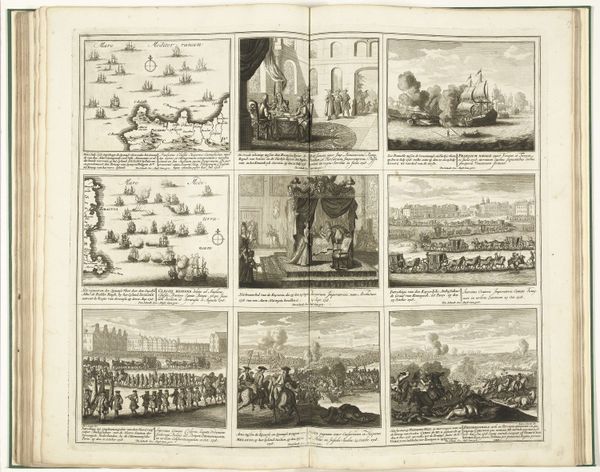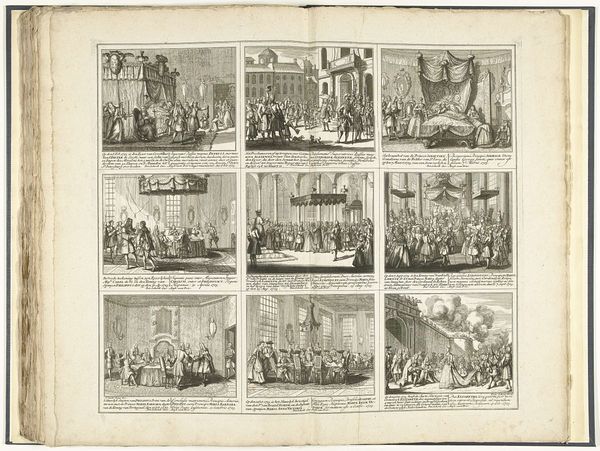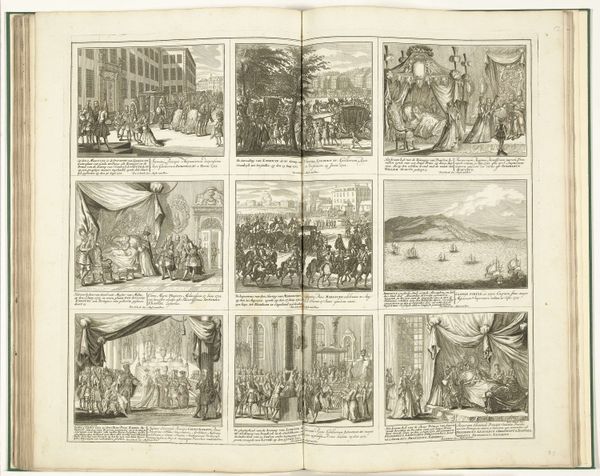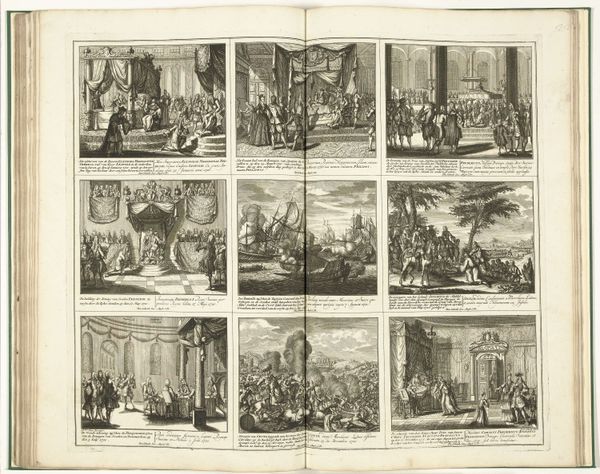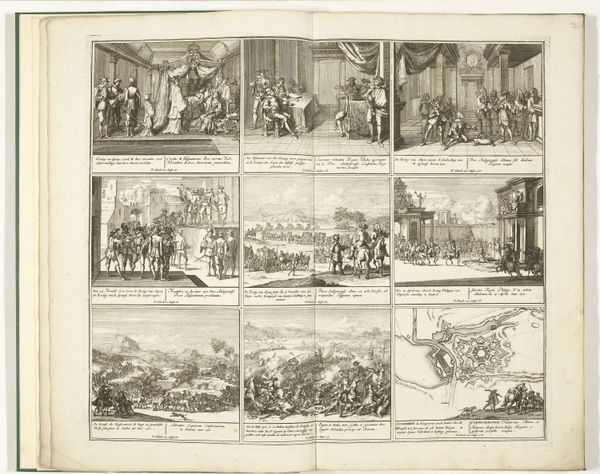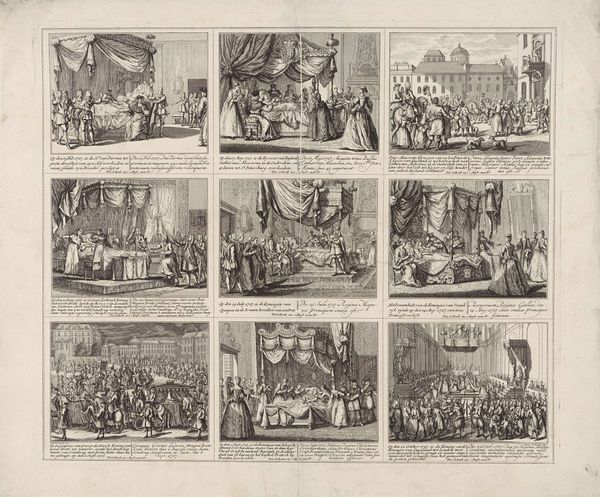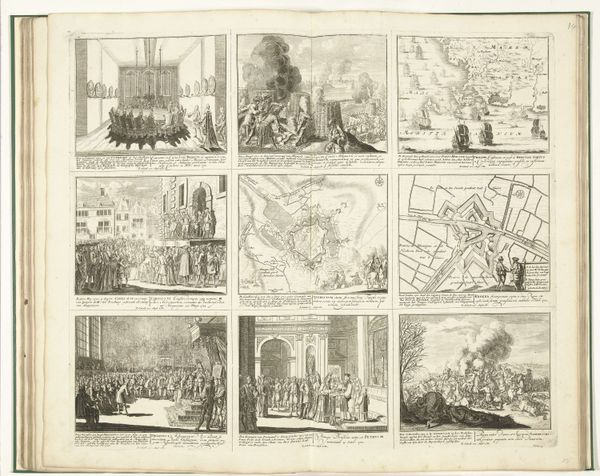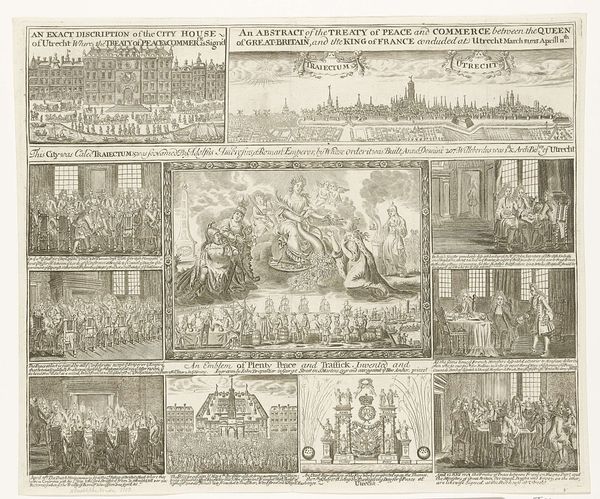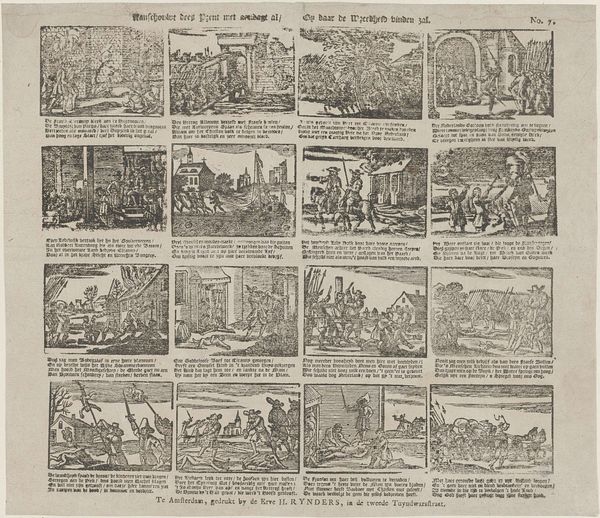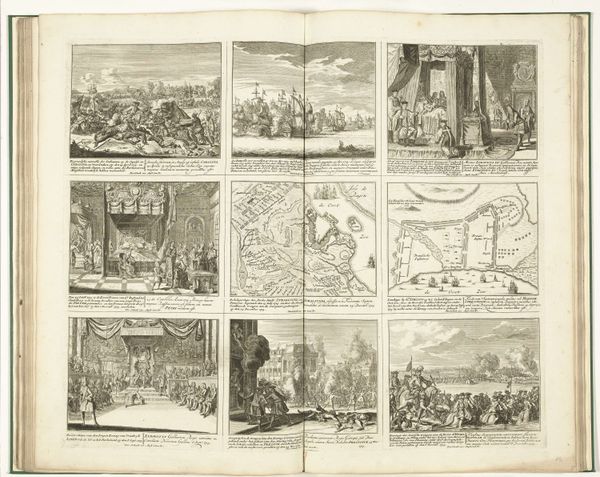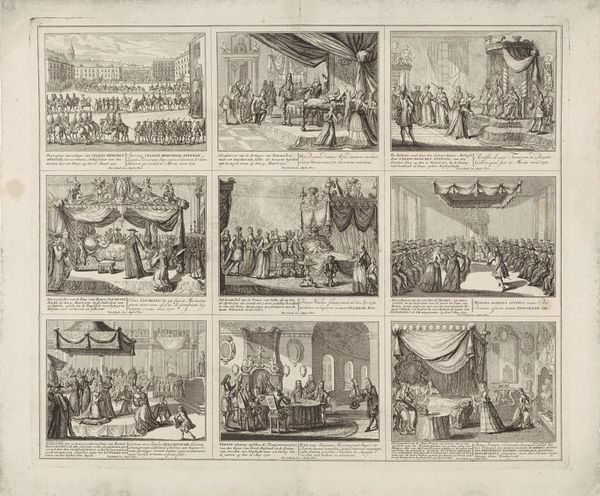
print, engraving
#
narrative-art
#
baroque
# print
#
cityscape
#
history-painting
#
engraving
Dimensions: height 538 mm, width 635 mm
Copyright: Rijks Museum: Open Domain
Curator: Today we’re looking at “Schouwburg van den oorlog (blad XX),” or “Theatre of War, Plate XX,” an engraving from possibly 1719-1722, by Leonard Schenk. It’s currently housed in the Rijksmuseum. Editor: This is fascinating! At first glance, the composition with nine separate scenes on one page feels quite unusual. It's like a visual tapestry of 18th-century warfare and politics. What strikes you most about its composition? Curator: Indeed, the composition, almost a grid, segments the narrative. Notice how Schenk manipulates the viewer’s eye. It isn't simply a recounting of events, but a structured presentation. Consider how the top row deals with parades of power while the center row depicts the theater of war and the bottom depicts royal encounters and ceremonies. It is the arrangement, and the clear lines of separation, that structure the underlying themes, not necessarily the images in each panel. Editor: That’s a great observation! So it’s less about what’s happening in each little frame, and more about the conscious act of framing itself? The structure creates meaning, separate from the subject? Curator: Precisely. Examine the use of line—the clear, unwavering borders around each scene and consider that in contrast with the chaos depicted within them. Schenk offers a means of visual control in depicting conflict. The material quality, the very medium of engraving, lends itself to this ordered, almost clinical dissection of war. Do you perceive a sense of detachment, perhaps? Editor: Yes, definitely. Although the scenes depict battles and processions, there's a distinct lack of emotional intensity due to the format. The rigid framework almost neutralizes the impact of the content. What would you say Schenk is commenting on with that approach? Curator: One could argue Schenk is making a formal argument, using the inherent qualities of the engraving itself, about power, control, and the representation of conflict. What was created in chaos can, after all, be reorganized into neat, controlled spaces that carry a new underlying logic. Editor: I never considered the potential power in something as simple as lines and borders! This has completely changed my perspective on how to analyze prints. Curator: Precisely. It's often within the formal elements themselves that meaning truly resides.
Comments
No comments
Be the first to comment and join the conversation on the ultimate creative platform.
